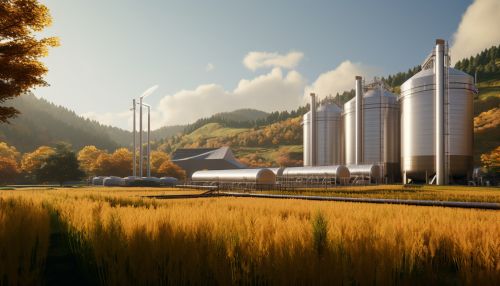Bioenergy
Introduction
Bioenergy is a form of renewable energy derived from biological sources. To be considered bioenergy, the biological source must be a renewable one. This can include organic materials such as plants, residue from agriculture or forestry, and the organic component of municipal and industrial wastes. Even the fumes from landfills can be used as a biomass energy source. The use of bioenergy can potentially reduce greenhouse gas emissions, significantly contributing to the mitigation of climate change.
Types of Bioenergy
Bioenergy comes in many forms, all of which can be converted into electricity, heat, or biofuels for transportation.
Bioelectricity
Bioelectricity is the generation of electric power from bioenergy sources. This is typically achieved through direct combustion, co-firing, pyrolysis, or gasification. Direct combustion involves burning biomass to generate heat, which is then used to turn water into steam, driving a turbine connected to an electrical generator.
Bioheat
Bioheat is the production of heat for residential and industrial use through the direct combustion of biomass materials. This can involve burning wood pellets in a residential stove or burning agricultural waste in a large industrial boiler.
Biofuels
Biofuels are transportation fuels like ethanol and biodiesel that are made from biomass materials. These fuels are usually blended with petroleum fuels (gasoline and diesel fuel), but they can also be used on their own. Using biofuels can help reduce the dependence on foreign oil and reduce greenhouse gas emissions.


Production of Bioenergy
The production of bioenergy involves a series of steps which include the collection of biomass, preparation, and the conversion process.
Collection of Biomass
The first step in the production of bioenergy is the collection of biomass. Biomass can be collected from a number of sources. In the case of agricultural residues, these are usually left over from crops that have been harvested for other purposes. For example, straw left over from a wheat harvest can be collected for use in bioenergy production.
Preparation
Once the biomass has been collected, it needs to be prepared for the conversion process. This can involve a number of steps, depending on the type of biomass and the intended end product. For example, if the biomass is going to be used for biofuel production, it may need to be dried and ground into a powder.
Conversion
The conversion process involves transforming the biomass into a usable form of energy. This can be done through a number of different processes, including combustion, gasification, pyrolysis, and anaerobic digestion.
Benefits and Challenges
Bioenergy has a number of potential benefits. It can help reduce greenhouse gas emissions, contribute to energy security, and provide opportunities for rural development. However, there are also a number of challenges that need to be addressed. These include the sustainability of biomass resources, the impact on food security, and the need for technological advancements.
